June 2018
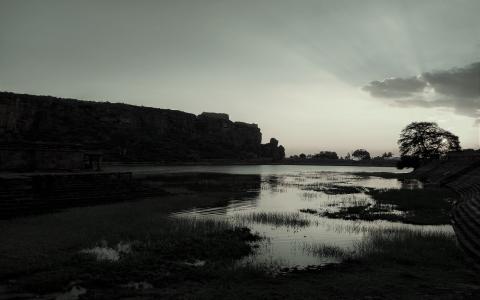
ಕಲಾಸ್ವಾದದಲ್ಲಿ ರಸ-ಭಾವನೈರಂತರ್ಯ: ಒಂದು ಜಿಜ್ಞಾಸೆ
ಭರತನು “ರಸಾಧ್ಯಾಯ”ದಲ್ಲೊಂದೆಡೆ:
“ನ ಭಾವಹೀನೋऽಸ್ತಿ ರಸೋ ನ ಭಾವೋ ರಸವರ್ಜಿತಃ | ಪರಸ್ಪರಕೃತಾ ಸಿದ್ಧಿರನಯೋರಭಿನಯೇ ಭವೇತ್ ||” (೬.೩೬)
ಎಂದು ಒಕ್ಕಣಿಸಿದ್ದಾನೆ. ಇದನ್ನು ವಿವರಿಸುತ್ತ ಅಭಿನವಗುಪ್ತನು ಲೋಕದಲ್ಲೆಲ್ಲಿಯೂ ವಿಭಾವಾದಿವ್ಯವಹಾರಗಳಿರುವುದಿಲ್ಲ, ಅಲ್ಲಿರುವುದೆಲ್ಲ ಕಾರ್ಯ-ಕಾರಣಸಂಬಂಧವೇ; ಹೀಗಾಗಿ ಕಲೆಯಲ್ಲಿ ಮಾತ್ರ ಭಾವಗಳ ಮತ್ತು ರಸಗಳ ಪ್ರಸ್ತಾವವಿರುತ್ತದೆಂದು ಹೇಳುತ್ತಾನೆ. ಮತ್ತೆ ಹಲವೆಡೆ ಭಾವ ಮತ್ತು ಭಾವನೆಗಳನ್ನು ವ್ಯಾಪ್ತ್ಯರ್ಥದಲ್ಲಿಯೂ ಆಸ್ವಾದಾರ್ಥದಲ್ಲಿಯೂ ಸ್ವೀಕರಿಸಿ ರಸ-ಭಾ...
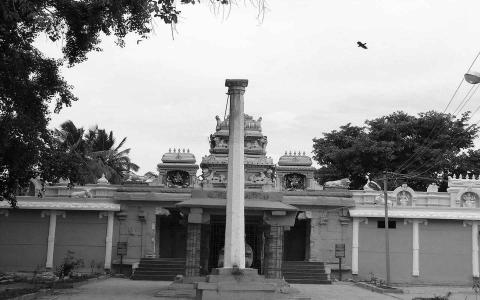
- 1 -
Sri Subbabhatta
Mulabagal Sri Subbabhatta hailed from a lineage of Raja Purohitas (Royal Purohitas) and belonged to the Badaganadu subsect. He was younger to Sri Venkatarama Bhatta. He was a Rg Vedin but still studied Jyotisha and Dharmashastras under the tutelage of Sri Venkatarama Bhatta, who was a Yajur Vedin. His house neighbored that of Sri Venkatarama Bhatta.
There were about six or seven Smarta[i] homes and about two hundred and...
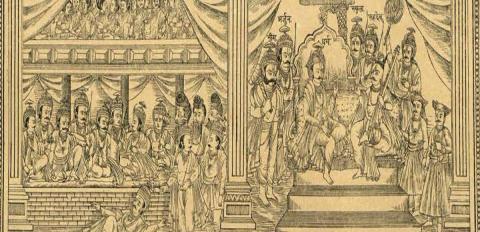
Yudhiṣṭhira welcomed Vidura with great joy at Khāṇḍavaprastha. He enquired after the wellbeing of Dhṛtarāṣṭra and his sons. Observing that Vidura’s face lacked joy, he asked, “Dear uncle, what’s the matter? It looks like you’re not happy! Is everything alright? Are the children and citizens coping well with Dhṛtarāṣṭra?” Vidura said, “The king his children are keeping well. He’s pleased with his obedient children. He enquired after your...
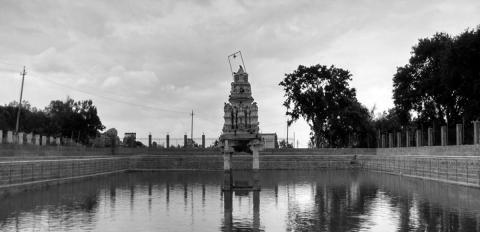
Sri Chandrashekhara Sastri belonged to the Hulusukamme (or Ulucukamme) Brahmana subsect hailing from Srinivasapura. He arrived in Mulabagal as the Headmaster of the Anglo Vernacular School. He earned the respect of all people owing to his character, scholarship, and work ethic. His elder brother Sri Nanjunda Sastri was a renowned Vedic Guru; his younger brother, Sri Subbasastri made a name for himself as the schoolmaster in a place named...
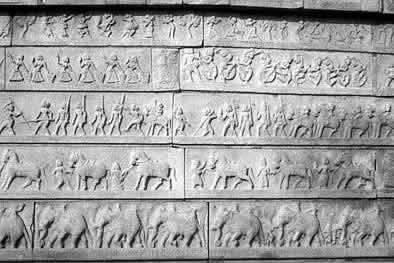
(ಕಳೆದ ಸಂಚಿಕೆಯಿಂದ...) ಎಲ್ಲಾ ಶಿಲ್ಪಗಳೂ ನೃತ್ಯಶಿಲ್ಪಗಳಾದೀತೇ? ನೃತ್ಯಕ್ಕೋ ಚಲನೆಯೇ ಉಸಿರು. ಆದರೆ ಚಲನಾತೀತವೆನಿಸಿದ ನರ್ತನಶಿಲ್ಪಗಳನ್ನು ಗುರುತಿಸುವುದು ಹೇಗೆ? ಶಿಲ್ಪಗಳನೇಕ ವಿಶೇಷವಾದ ಶಾಸ್ತ್ರೀಯವಾದ ಭಂಗಿಭಾವಗಳನ್ನು ಸಾಧಿಸಿದವೇ. ಕಥಾಪ್ರಸಕ್ತಿಯನ್ನು ಹೇಳುವ ಚರರೇಖಾವಿಲಾಸದ ಶಿಲ್ಪಗಳೂ ಹಲವಿವೆ. ಅವೆಲ್ಲಾ ನೃತ್ಯಶಿಲ್ಪವೆಂದೆನಿಸಿಕೊಳ್ಳಲು ಅರ್ಹವೇ? ಅಥವಾ ನಾಟ್ಯಾಯಮಾನತೆಯಲ್ಲಿ ಅವುಗಳ ಕೊಡುಗೆ ಎಷ್ಟು? ಇದು ಅನ್ವೇಷಕರನೇಕರ ಬಹುಮುಖ್ಯ ಸಮಸ್ಯೆ.ಈ ಪ್ರಶ್ನೆಗಳಿಗೆ ಉತ್ತರ ಹುಡುಕುವ ಕಾಯಕವೇ ಈ ಪ್ರಬಂಧದ ಮುಖ್ಯವಸ್ತು. ಭಾರತೀಯ ಕಲೆಗಳು ತಮ್ಮ ತಮ್...
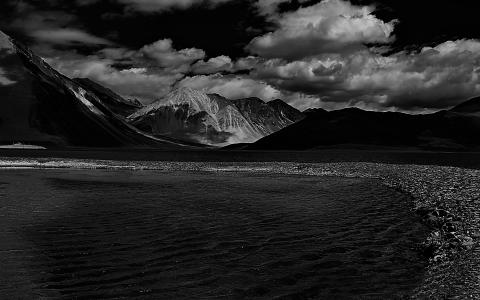
ಸಾಹಿತ್ಯದಲ್ಲಿ ದೃಶ್ಯಕಾವ್ಯದ ಮೇಲ್ಮೆ
ಅಭಿನವಭಾರತಿಯ ಮೊದಲಿಗೇ ದೃಶ್ಯಕಾವ್ಯದ ಮೇಲ್ಮೆಯನ್ನು ಅಭಿನವಗುಪ್ತನು ಹೇಳಿದ್ದಾನೆ. ಈ ಭಾವವನ್ನು ಕೃತಿಯ ಆದ್ಯಂತ ಅಲ್ಲಲ್ಲಿ ಬಿತ್ತರಿಸಿದ್ದಾನೆ ಕೂಡ. ವಿಶೇಷತಃ “ರಸಾಧ್ಯಾಯ”ದಲ್ಲಿ ಈ ಸಂಗತಿಯನ್ನು ಮತ್ತೆ ಪ್ರಸ್ತಾವಿಸುತ್ತಾನೆ. ಅಲ್ಲದೆ ಈ ಬಗೆಯಲ್ಲಿ ದೃಶ್ಯಕಾವ್ಯದಲ್ಲಿರುವ ರಸಪಾರಮ್ಯಕ್ಕೆ ಕಾರಣವನ್ನೂ ಹೇಳುತ್ತಾನೆ. ಮುಖ್ಯವಾಗಿ ಇಲ್ಲಿ ಚತುರ್ವಿಧಾಭಿನಯಗಳೂ ಸಮುಚಿತವಾದ ವೃತ್ತಿ-ಪ್ರವೃತ್ತಿಗಳೂ ಸೇರಿರುತ್ತವೆ; ಸಹೃದಯರಿಗೆ ಪ್ರತ್ಯೇಕವಾಗಿ ಕಲ್ಪಿಸಿಕೊಳ್ಳುವ ಶ್ರಮವಿಲ್ಲದೆಯೇ ವಿಭಾವಾನುಭಾವಸಾಮಗ್ರಿಯು ಇಂದ್ರಿಯಗೋ...
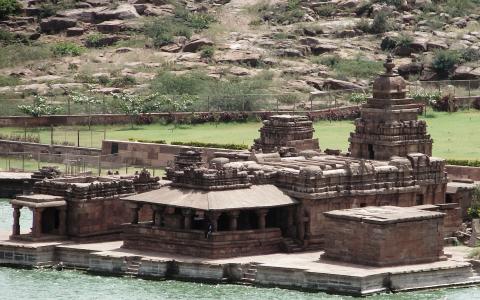
Badami Chalukyas
Another great luminary whom we must consider alongside Harshavardhana is Immadi Pulakeshi (Pulakeshi II). He belongs to the Badami Chalukyas. Harshavardhana hailed from a Vaiśya clan, Pulakeshi from a Śūdra clan. Basically the Chalukyas came from an agricultural background; they were originally a farming community. In the first sarga (canto) of Bilhaṇa’s Vikramāṅkadevacaritam, we find a story about the origin of the Chalukyas...

முன் அத்தியாயங்களில் நாம் இதுவரையில், சிவன் எவ்வாறு ஒரு தனி நபருக்கான அடையாளமாகவும், ராமன் எவ்வாறு ஒரு குடும்பஸ்தருக்கான அடையாளமாகவும் விளங்கினார்கள் என்பதைப் பற்றிப் பார்த்தோம். நாம் இப்போது கிருஷ்ணனின் வாழ்க்கை வரலாற்றையும், அவன் எவ்வாறு ஒரு சமூகப் பிரதிநிதியாக தன்னை முன்னிலைப் படுத்தினான் என்பதைப் பற்றியும் பார்க்கலாம்.
பொதுவாகவே கலைஞர்கள் சிவன், ராமன், கிருஷ்ணன் அல்லது காளி, துர்கை, ஸ்கந்தன், கணேசன் ஆகியோரை வரைகையிலே, அவர்களை ஆயுதபாணிகளாகவே...

Thus, all the impediments that had come in the way of performing the Rājasūya-yāga were removed; Yudhiṣṭhira completed the yāga successfully under the protection of Kṛṣṇa. All the guests returned to their hometowns after seeking his permission. Yudhiṣṭhira gave them bountiful gifts and bade them farewell with great affection. Kṛṣṇa too expressed his wish to return to his city of Dvārakā. Yudhiṣṭhira expressed his gratitude to Kṛṣṇa and said, “...
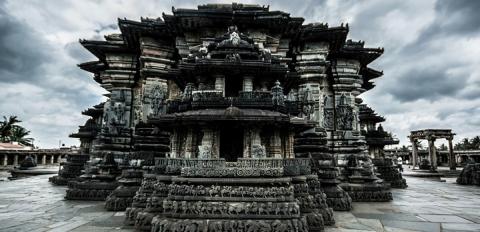
ಮಾನವನ ಜೀವವಿಕಾಸದ ಹಾದಿಯಲ್ಲಿ ಆಸ್ವಾದನೆಯ ಮಟ್ಟಕ್ಕೇರಿದ ಕಲೆಗಳ ಪೈಕಿ ಚಿತ್ರವು ಮೊದಲನೆಯದಾದರೆ, ಶಿಲ್ಪ ಎರಡನೆಯ ಅತಿ ದೊಡ್ಡ ಸಾಧ್ಯತೆ. ಆಯಾಯ ಕಾಲದ ಆಸ್ವಾದನೆಯಲ್ಲಿ ಲೀನವಾಗುವ ಗಾನ, ನಾಟ್ಯಗಳನ್ನೂ ನವನವೋನ್ಮೇಷವಾಗಿ ಸ್ಥಿರೀಕರಿಸಿ, ಎಷ್ಟೋ ಕಲಾವಿಕಾಸಗಳಿಗೆ ಚಾರಿತ್ರಿಕವಾಗಿ ಶಾಶ್ವತತೆಯನ್ನು ದಯಪಾಲಿಸುತ್ತಲೇ, ಭವಿಷ್ಯದ ಮತ್ತೊಂದು ಗಾನ-ನಾಟ್ಯಾವರಣದ ವಿಕಾಸಕ್ಕೂ ಉಪಕರಿಸಿವೆ. ಶಿಲ್ಪಗಳಿಗೆ ಮಾನವ ದೇಹಗಳೇ ಪ್ರೇರಣೆ ಎಂಬುದೇನೋ ನಿಜ. ಆದರೆ ಅವು ಯಥಾವತ್ತು ಪ್ರತಿಕೃತಿಗಳಾದರೆ ಚೆಲುವು ಸಾಕ್ಷಾತ್ಕಾರವಾದೀತೇ? ಇನ್ನು ನೃತ್ಯಕ್ಕೋ ಚಲನೆಯೇ ಉಸಿರು. ಆದರೆ...
